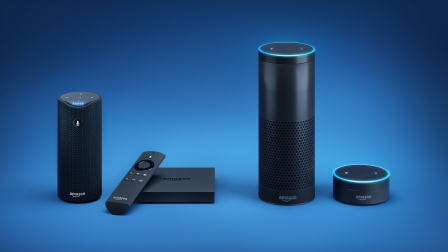PullString opens up its conversational platform for Amazon Alexa skills
The availability of the PullString platform means brands are now getting more options for developing their interactive personalities through intelligent voice agents.
In September, PullString announced the availability of its conversational computing platform for chatbots, talking dolls and other uses.
This week, the San Francisco-based company said that its platform is available to developers of skills (that is, applications) for Amazon’s intelligent voice agent, Alexa. This ability to create and publish Alexa voice-based skills points toward new ways brands can interact via conversation.
The PullString platform had been used to build the Alexa skill to accompany Amazon’s TV series, “The Grand Tour.” Previously, it was employed to create interactive conversations for the companion app to “Hello Barbie,” as well as for a Facebook Messenger-based Lt. Reyes chatbot to promote the video game, “Call of Duty.”
Included in the PullString integrated development environment are a conversation authoring and debugging environment, an AI engine, text message and bot conversation support and direct publishing to Alexa.
A skill related to “Star Wars,” for instance, might present a conversation with the Yoda character. Alexa processes the incoming question, such as “Yoda, what’s the temperature today in New York City?” When utilized, PullString handles the skill’s response, and would call out to a weather service to find the temperature via its APIs before answering in Yoda’s voice.
The San Francisco-based company says its platform is designed for use by both creative designers and software developers. Amazon already offers its Amazon Skills Kit (ASK) and its recently launched Lex bot framework.
PullString CEO Oren Jacob told me that ASK provides a “raw,” more developer-oriented tool, while Lex separates the creation of “content” — what the Alexa skill might say — from “intent,” which is what the human user says and means.
By contrast, he said, PullString integrates the creation of these two sides of a conversation. Lex might be fine for implementing a simple back-and-forth of content and intent in a “knock-knock” joke, he said, but many conversations bounce all around in a non-linear fashion.
“That’s what PullString was designed to do,” he said.
He also noted that both ASK and Lex provide access to Alexa’s key Intent Engine for processing what users want, but PullString offers a more developed interface to the Engine, as well as tools for analytics, version control and publishing.
PullString also provides audio tools for managing a recording session with voice talent, so that a brand can more readily use the same voices associated with, say, its ad campaigns. There are no voice recording tools in ASK or Lex.
PullString’s arrangement with Amazon is not exclusive, Jacob said, so Amazon might utilize other platforms, and Jacob said his company expects to be working with other intelligent voice agents.
Marketing Land – Internet Marketing News, Strategies & Tips
(52)














